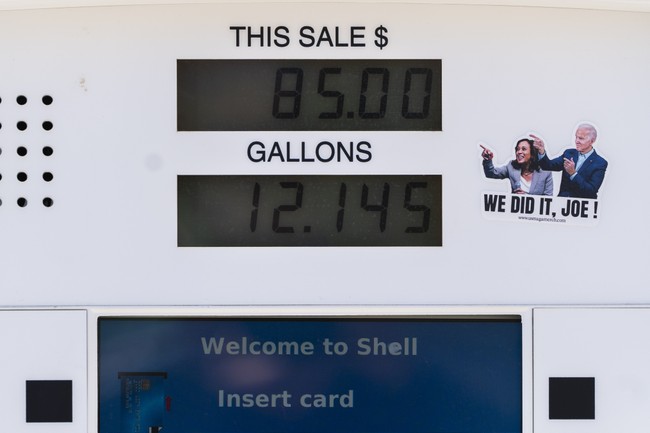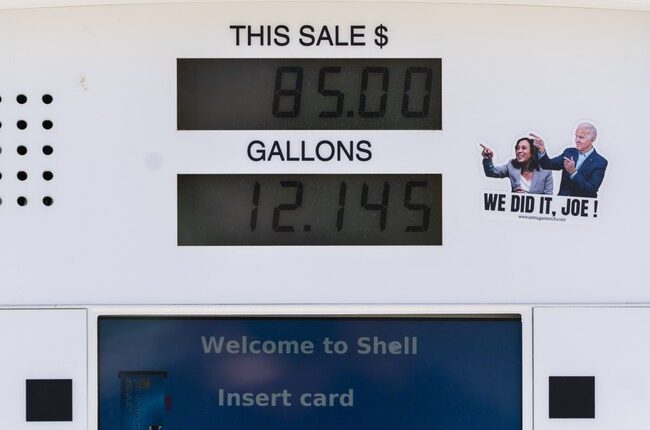
By
President Joe Biden and congressional Democrats capitalized on the public’s concern about rising prices for everyday essentials like food and fuel. Many Americans were calling for action to combat inflation without realizing that inflation is caused by excessive government spending and restrictive policies that hinder supply chain efficiency. When demand exceeds supply and the government injects more money into the economy, prices naturally go up.
The Infrastructure Investment and Jobs Act (IRA) was essentially a sneaky attempt to push through aspects of the Green New Deal that Biden and his team had previously struggled to get approved by Congress. Biden framed the IRA as part of a comprehensive strategy to address climate change. Despite not receiving any support from Republicans, the IRA was passed.
Critics of the law warned of its inflationary effects, but the mainstream media chose to ignore this.
Since its enactment, the IRA has faced criticism for squandering billions of dollars on ill-conceived green projects. Some companies received substantial funding from the IRA but ended up folding due to technological shortcomings and a lack of market demand. Additionally, large sums of taxpayer money have been funneled to unproven environmental startups with close ties to Biden, his administration officials, and influential Democratic lawmakers.
More than a year after he signed the IRA into law, Biden admitted the truth, saying at a fundraiser the IRA “has nothing to do with inflation; it has to do with … $368 billion, the single-largest investment in climate change anywhere in the world—no one has ever, ever spent that.”
The White House estimated the total cost of the IRA, not just the climate program portions, would be $392 billion over 10 years, with the Congressional Budget Office (CBO) estimating it would add $270 billion to the federal debt.
These estimates, as federal program estimates commonly are, were laughably low. The government has already spent more on climate portions of the bill than Biden’s team claimed the entire bill would cost over 10 years.
As detailed in a recent study by The Heartland Institute’s Tim Benson, most of the costs come in the form of tax credits given to various green energy programs.
As Benson explains, the initial federal allocation for just three tax credits tops $182 billion: the investment and production tax credit, tax credits for individual energy efficiency improvements, and the zero-emissions vehicle tax credit. In addition to tax credits, there are direct federal spending, both directed and discretionary; various subsidies for the adoption of selected technologies or industrial and agricultural practices approved by the government; other subsidies; and low-interest loans and loan guarantees.
Under Environmental Protection Agency guidance, many of the programs are open-ended, with no caps on enrollment or claims of tax credits. So, the actual costs have ballooned.
Numerous financial groups, government bodies, and non-profit organizations have examined the IRA and universally concluded it will cost much more than the government initially estimated. Credit Suisse estimated total federal spending on “green” provisions in the IRA would exceed $800 billion and possibly reach as high as $1.7 trillion. Goldman Sachs estimated the IRA’s spending incentives at $1.2 trillion through 2032.
The U.S. Congressional Joint Committee on Taxation estimated the IRA would cost at least $633 billion through 2033.
In a March 2023 report, the Brookings Institution, a left-wing think tank, produced a cost estimate for the IRA’s green subsidies that ranged from $900 billion to $1.2 trillion through 2031.
The Committee for a Responsible Federal Budget estimates the IRA will cost $870 billion through 2031 and $1.1 trillion through 2033.
The Cato Institute projects the IRA’s green subsidies would exceed $1.8 trillion over a decade.
President Donald Trump is well aware that the IRA robs consumers of choice, skews capital investment, and undermines sound energy policy. Early on, Trump directed agencies to look for unspent IRA funds, block new spending, and claw back what they could. Lee Zeldin, Trump’s Environmental Protection Agency director, has already identified more than $20 billion held in a private bank to be shipped to Biden/Democrat crony nongovernmental organizations. Zeldin directed the bank not to disperse the funds and is in court trying to get the money returned to the government.
Because Congress passed the law, administrative action alone is not enough. As a result, much of the spending can only be blocked or clawed back if Congress rescinds it.
With this in mind, a coalition, led by our allies at the Competitive Enterprise Institute, sent a letter requesting Republicans in Congress to stand by their earlier stance on the IRA and get back as much of the money as legally possible.
To get more affordable and reliable energy, the IRA’s green spending must be repealed. There is no better time to push for that than while Congress is working through budget reconciliation. If they don’t get it done, voters will know which Republicans to blame.

















